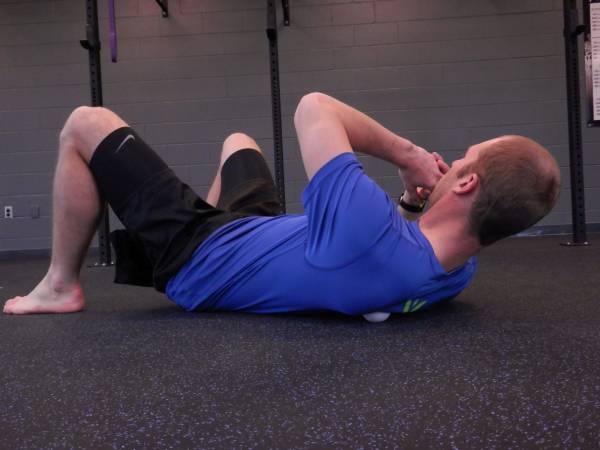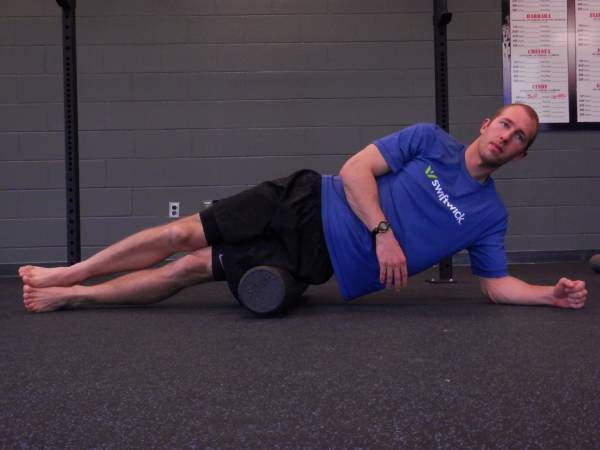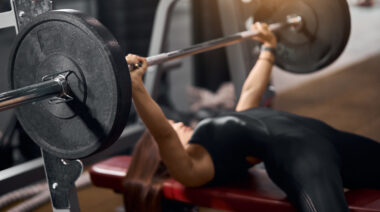Stretching and mobility are the most skipped parts of fitness, and also the most misunderstood. Mobility is the ability to move freely and easily, while stretching is a key way to help achieve this. We are born into this world with full mobility. As we age, the “use it or lose it” concept kicks in and most people begin to slowly stiffen up. It’s common for people to have general tightness as they age, however the truly sedentary can become entombed in their own bodies, unable to stand up straight or walk without assistance.
The good news is not only can mobility be sustained from an early age, but we can reclaim our ability to move freely. The old prescription of stretching your hamstring, quads, and chest for thirty seconds each hasn’t been getting very good results, and we need to examine how to restore our full movement capacity. In previous articles we looked at foam rolling and the essential elements of rest and recovery. Make sure to check out both of these articles, as they will be referenced in our discussion below.
Mobility and stretching can be built into your workouts in three unique ways. The key is to spend time working on the areas of your body that need it most, rather than just doing random stretches and drills. Begin to assess your individual movement patterns through screens to find restricted areas while also spending time on mobility exploration to determine your individual needs. This means go through mobility drills to ascertain which areas are restricted. This will begin to fill in your personal movement profile and what is limiting it.
System #1 – The Classic Approach to Stretching
- Before workout – Warm up
- Workout – Full range of motion exercises
- After Workout – Static stretching
System #2 – Integrated Training
- Before workout – Dynamic stretching, self-myofascial release
- Workout – Mix power and strength training with mobility exercises as supersets
- After Workout – PNF, active isolated stretching, and static stretching
System #3 – Mobility Training Sessions
- Spend ten minutes to two hours stretching and mobilizing
Static stretching should not be used before workouts as it is actually linked to lower power output, reduced endurance, and high risk of injury. Dynamic stretching has had much better results opening the joints and muscles up to their current limits but without the negative side effects. Dynamic stretching will not often result in large mobility gains, and therefore should be reserved as a warm-up.
We will primarily examine System #2 and why this paradigm shift in workout structure can give you better results. System #3 and specific mobility training sessions will also be referenced and an example given. During System #2 we will perform self-myofascial release and mobility drills in-between sets during the time you would normally be resting.
System #2 – Workout: Upper Body Power Focus
Warm-up – 2x10m walking knee pulls, walking quad stretch, walking figure four, walking lunges, and walking leg kick. Then perform 15x arm circles forwards and backwards, and 15x squat jumps.
Foam Roll – Thoracic spine spend 3 minutes. Roll lats for 2 minutes each.
Workout –
- Shoulder Press 3×2, Push Press 3×2, Push Jerk 3×2, working up to heavy for each.
- In-between each set of shoulder press perform a thoracic spine rotation stretch for 30 seconds each direction. You may bias one side if you have rotation asymmetry.
 After each set of push press use a lacrosse ball or Theracane to work on trigger points underneath and in-between shoulder blades.
After each set of push press use a lacrosse ball or Theracane to work on trigger points underneath and in-between shoulder blades.- After each set of push jerk use a Theracane or barbell to release trigger point in traps or work out general tightness.
- 6×5 Overhead Squat, working on form and depth, and using a weight up to 75% 1RM.
- Between the first two sets of overhead squats use a foam roller on IT bands for 1 minute each side. Between the second two sets use a foam roller on tops and inside of quads. After the last two sets roll out calves.
- 5×10 Pull-ups and 5×30 second ring dip support superset with minimal rest.
Afterwards – Spend 3 minutes stretching hip flexors on both sides, keeping the core tight to not stretch abdominals. Use a wall to perform the calf and Achilles stretch as shown in the ankle mobility article. Spend two minutes on each side stretch out shoulders.
System #3 – Squat Mobility Workout
Warm-up – 2x10m walking knee pulls, walking quad stretch, walking figure four, walking lunges, and walking leg kick.
 Then perform 15x arm circles forwards and backwards, and 15x squat jumps.
Then perform 15x arm circles forwards and backwards, and 15x squat jumps.- Spend 3 minutes in a deep squat working on good form, use assistance if needed.
- Foam roll thoracic spine for 2 minutes.
- Spend 3 more minutes in a deep squat.
- Foam roll hip flexors, or use a lacrosse ball to perform self-myofascial release.
- 4×8 bodyweight squats working on good form and full depth
- Foam roll IT bands, and calves.
- 4×5 kettlebell goblet squats focusing on upright torso.
- Then spend 3 more minutes in a deep squat.
Spending dedicated time to mobility and stretching will pay dividends in the long term, allowing you to train more effectively and have reduced risk of injury. Always remember to keep within your personal threshold and that it is possible to overstretch in a workout. Your focus should be optimal movement patterns, and full range of motion for all your joints. Specific range of motion will be body specific to your makeup, and the goal is efficient movement, not to win a stretching competition. Go out and spend some quality time taking care of your body and it will thank you for years to come.






